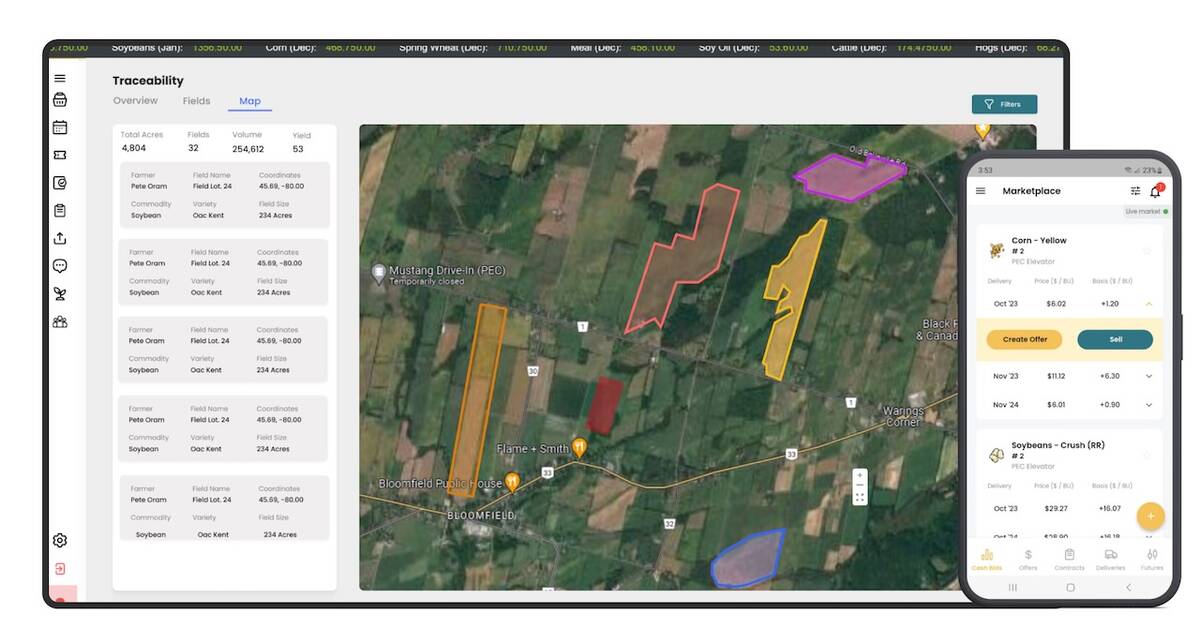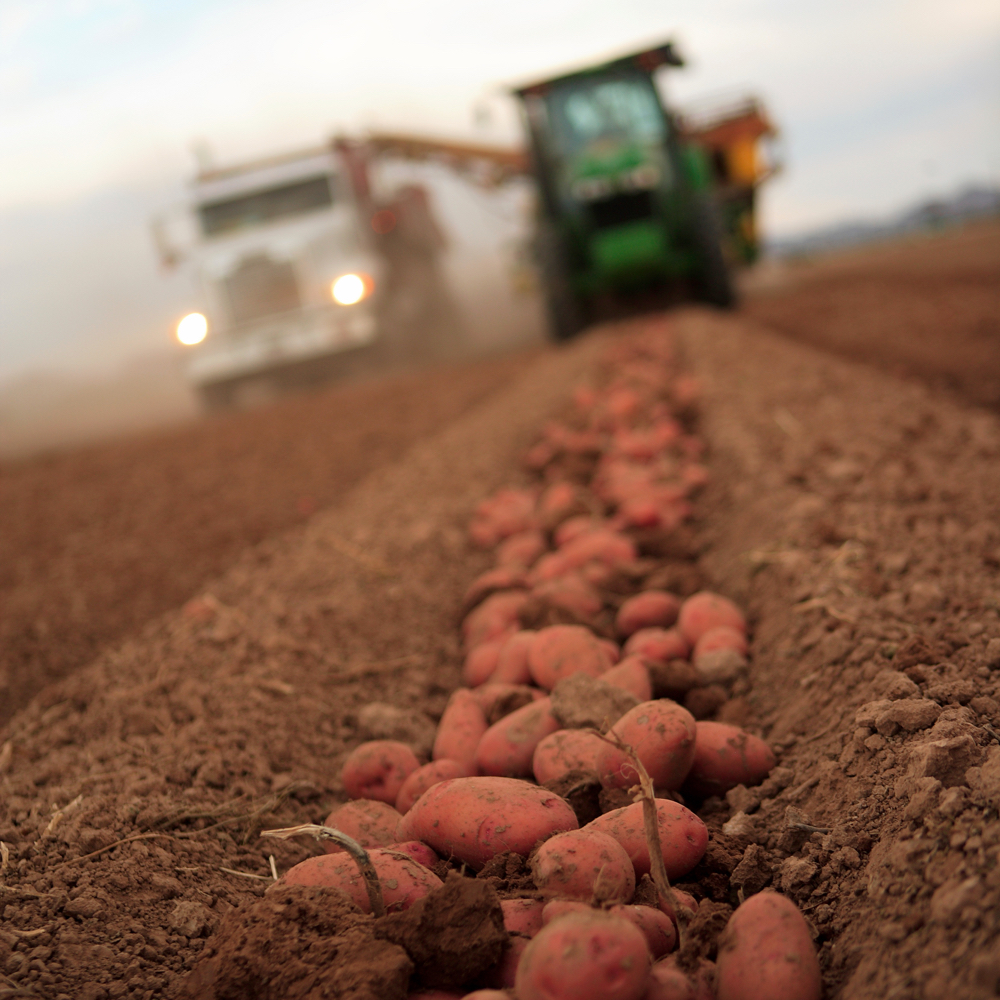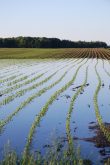The benefits of adding small grains to a crop rotation were explored Dec. 1 in the first of a five-part series hosted by the Ontario version of the federally supported Living Labs Project.
The “Innovations in Small Grains” session featured Ontario farmers Greg Vermeersch, Brett Israel and Joe Wecker and was co-hosted by the Ecological Farmers Association of Ontario (EFAO) as part of its annual conference.
Israel is an EFAO member who raises organic crops and hogs near Wallenstein, Vermeersch is a member of the Innovative Farmers Association of Ontario (IFAO) who runs a cash crop farm near Tillsonburg, and Wecker recently relocated his farm from southern Saskatchewan to southwestern Ontario, where the family grows a range of crops.
Read Also

Ontario company Grain Discovery acquired by DTN
Grain Discovery, an Ontario comapny that creates software for the grain value chain, has been acquired by DTN.
Why it matters: Adding small grains to a crop rotation can pay dividends directly or indirectly and in both the short and long term, farmers suggest.
“The value of small grains is pretty incalculable,” said Israel, after describing his farm’s 2020-21 crop year in which fall-planted winter barley harvested July 1 was followed by double-cropped, minimum-tilled organic soybeans.
“We’re seeing improved genetics” in both winter barley and short-season soybeans, he said, and there are good varieties available in Manitoba. When he is offered $38 per bushel for organic soybeans for feed, it doesn’t take much yield in organics to attain profitability.
But conventional or organic, “as we continue to see the development of more adaptable beans in shorter season environments, we’ll be able to break those profitability thresholds,” said Israel.
Vermeersch said his farm has seen yield boosts in corn and soybeans following a small grains crop. Thanks to the sandy soil in his region, common rye is grown by numerous farms. Hybrid rye has higher yield potential, he noted, but can be more difficult to grow. Like Israel, he has turned more recently to winter barley.
Vermeersch said it’s tough to get away from the “poverty grass” label that some farmers attach to small grains because of the limited price potential. But winter barley and similar crops spread the farm’s workload across more of the growing season, which he likes. As well, he said there are noticeable soil health benefits.
The Weckers had a diverse crop rotation on their farm near Regina that included a few “ancient grains” — einkorn, kamut, spelt and golden flax.

One attraction to that array was the genetic base that hasn’t been adapted to rely on external inputs. With few or no options for off-farm livestock manure and high costs for synthetic fertilizer, fewer inputs translated into a healthier bottom line, said Wecker.
“We knew (the less common small grains) would yield as good with way less fertility.”
After relocating to southwestern Ontario, the Weckers maintained their specialty crop buyers and continue growing a diverse mix. Soil types are similar to those on their farm in Saskatchewan, but the big difference is significantly more precipitation.
The “Innovations in Small Grains” session was the first in the Living Labs project’s Inter Conference Speaker Series. It is free (sign up at bit.ly/LivingLabOntario), and the next four sessions take place over the winter. As with the first session, each is part of a larger conference hosted by one of the partner organizations.
Agriculture and Agri-Food Canada weed ecologist Eric Page described the initiative, announced in March 2021, as “a new approach to federal research that is really centred around co-developed or user-developed innovations” with a focus on maintaining soil cover and reducing tillage.
Israel and Vermeersch are among the farmer collaborators, and the upcoming speaker series sessions feature others among that group.
Their efforts to include winter barley and double-cropped or relay-cropped soybeans in their rotations are being tracked by Living Labs. The Dec. 1 presentations included photos and explanations of their 2020-21 experiments.
Vermeersch planted 30-inch row beans on April 28 between growing twin-row winter barley. The beans were planted a bit deeper than usual to keep them in the ground long enough to get the barley off the field.
But lack of soil moisture is a risk on sandy land that is challenged to hold enough heat for frost protection. They got a heavy frost that killed 80 per cent of the relay-cropped beans.
“It was due to the lack of moisture, partly because of the barley being there and taking up that moisture,” said Vermeersch. The beans that survived did well.
They didn’t buy any special equipment. For the combine, they put drainage tile on the cutter bar where it passed over the beans to protect them when the barley was combined. Where driven over, the soybeans popped back up after a couple of days.
Vermeersch also tried double-cropping, with the barley combined and beans planted around July 10. “I don’t think you could have gotten a better season for double-cropping.”
He is a conventional grower, as opposed to organic. Relay-cropped beans yielded 38 bushels to the acre and the double-cropped beans yielded 42. He believes the relay beans would have done better in a more normal year.
Israel is an organic farmer and the twin-row winter barley probably wouldn’t work due to weed control challenges. Double-cropping has potential when barley can be harvested July 1 as he did in 2021.
“It’s on Santa’s Christmas list to get a new no-till drill so hopefully the big guy is good to us,” he said. The family now uses a 20-year-old Case drill and often runs a high-speed disc over the barley stubble.
Page said he hopes the supports provided by the Living Labs project make it easier for farmers to try new things.
“As farmers, you take a lot of risks. … You’re sometimes not just on the leading edge but also the bleeding edge. This just allows us to be innovative and share.”
The next session on Jan. 21 is “Doing on-farm research” with representatives of The Soil Network research group. It is followed by “Grazing cover crops” as part of OSCIA’s conference on Feb. 8. “Full-time cover crops” with Woody van Arkel and Ken Laing will run on Feb. 17, and “Healthy soil, clean water” with Henry Denotter and conservation authority representatives is scheduled March 8.













